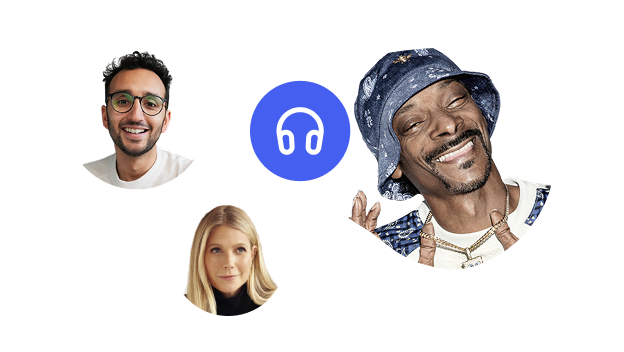Children with disabilities often struggle in school and require special education services. One such service is an individualized education program that guides the children towards success in school. Here you’ll learn more about IEP, its process, goals, benefits, and tools.
What is an Individualized Education Program?
An individualized education program (IEP) is a special education program developed by the U.S. Department of Education for children with disabilities. The program’s goal is to ensure a child with disabilities enrolled in an elementary or secondary school receives specialized instructions and, in some cases, additional services so they get the most out of free appropriate public education services.
Simply put, an IEP is a road map for a child with disabilities. It establishes the current skill level, the nature of the learning goal, and what needs to be done to achieve it.
IEPs are used nationwide, but different states and school districts may have different rules and laws. Every IEP is developed in an IEP meeting where parents and school staff come together to discuss what would be best for the student. Progress reports track the effectiveness of the IEP and help to identify any changes that need made.
The benefits of IEP
IEP has numerous benefits:
- IEP offers a chance for success in education - Many children with disabilities struggle in school and require extra help, tools, and resources. The IEP represents an alternative route for such children and helps them succeed in school.
- IEP helps children advance - IEP teachers are equipped to understand and encourage children with disabilities and help them throughout the school year in the least restrictive environment. Thanks to this, both educators and parents can track the child’s progress and adjust the program if necessary.
- IEP is reliable - IEP represents an individualized education plan. Every phase of the education curriculum has unique goals so that everyone involved in the program knows what to expect at what stage. Regular progress monitoring ensures the child is on the right track.
- IEP is concrete - Everyone involved is aware of the future steps in a child’s education journey. This ensures every participant knows how they should contribute to the program.
- IEP has measurable goals - IEP goals are Specific, Measurable, Achievable, and Timely (SMART). Bigger annual goals are broken into several smaller goals so that the child’s progress can be tracked.
- IEP is high-quality - A special education teacher is trained and qualified to meet the special needs of children with disabilities. Thanks to this, an IEP offers high quality and meets every child’s unique needs.
- IEP is holistic - Student progress isn’t the only goal of IEP. Children also learn more about empathy, acknowledging emotions, and developing relationships with their peers.
Key Individualized Education Program tools
The IEP process involves numerous tools that ensure learners achieve their individual goals.
Assistive technology
Assistive technology involves services and systems for delivering assistive products and services. Any item, software program, or piece of equipment designed to maintain or improve a person’s well-being, independence, and functioning falls into the category of assistive technology.
Wheelchairs, hearing aids, and prostheses are only some examples of assistive technology. Such technology is often a vital part of IEPs in both private and public schools.
Text to speech readers are of incredible importance in IEPs. These devices convert any text to spoken language, thus ensuring reading doesn’t represent an obstacle to education and knowledge.
Occupational therapy
Occupational therapy is a branch of healthcare that helps people with physical, cognitive, or sensory problems. In terms of IEPs, occupational therapy has numerous benefits.
First, it can help children with disabilities learn more about their emotions and how to acknowledge and control them. Second, it can help the children progress and improve their performance in school. Third, it can enhance the children’s self-esteem and sense of accomplishment.
In other words, occupational therapy is beneficial for both the children’s academic success and functional performance.
Besides a special education teacher and a general education teacher, an IEP team often includes occupational therapists, as well as other related services.
Edtech
Edtech, or education technology, combines IT tools and various educational practices to facilitate and enhance learning. Educators can use different technology tools to make the content more interesting, interactive, and inclusive.
Edtech allows educators to create individualized lessons that meet the educational needs of all children, regardless of their age or learning capabilities.
Physical therapy
A student’s IEP often involves physical therapy if the student meets eligibility criteria. Physical therapy helps students with an impairment or disability advance in school and develop motor skills and mobility.
If a student qualifies for physical therapy, a physical therapist will become a member of the IEP team and work alongside other team members to achieve school-based goals.
There is a specific process that parents need to go through to ensure their child receives physical therapy under the IEP. Besides the federal law, parents need to understand the state laws and what is covered under them.
Speechify - Supporting your child’s IEP
Assistive technology can and should be a part of an IEP. This technology is designed to support the progress of a child with disabilities. Children with reading difficulties can benefit immensely from text to speech programs like Speechify. This software features cutting-edge technology that allows users to convert any written text to spoken words.
Speechify is available as a browser extension and a mobile phone app, so you can use it anywhere. It allows you to customize the listening experience according to your preferences. You can choose the speed, voice, language, and even the preferred accent.
The program is incredibly easy to use and can be a powerful ally for every child with a disability. Try Speechify for free and see why millions of users worldwide love it.
FAQ
What are the components of IEP?
There are eight key components of every IEP. Those are current skill level, annual goals both short-term and long-term, progress tracking, special education services, duration of services, participation in mainstream classrooms, testing adaptations, and transitional goals and services.
Does my child need an IEP?
An IEP is required by law for any child that has one of the 13 disabilities listed in the Individuals with Disabilities Education Act (IDEA). A request for an IEP is made in school, and the child needs to be evaluated to confirm eligibility.
Who benefits from an IEP?
An IEP gives children a chance to participate in education and achieve different school-related goals. Besides children, everyone involved in the process benefits from an IEP, including educators, parents, school administrators, and related service providers.




